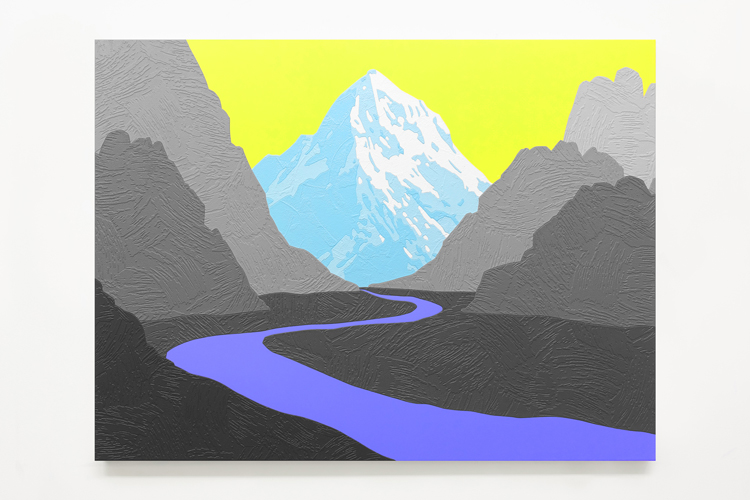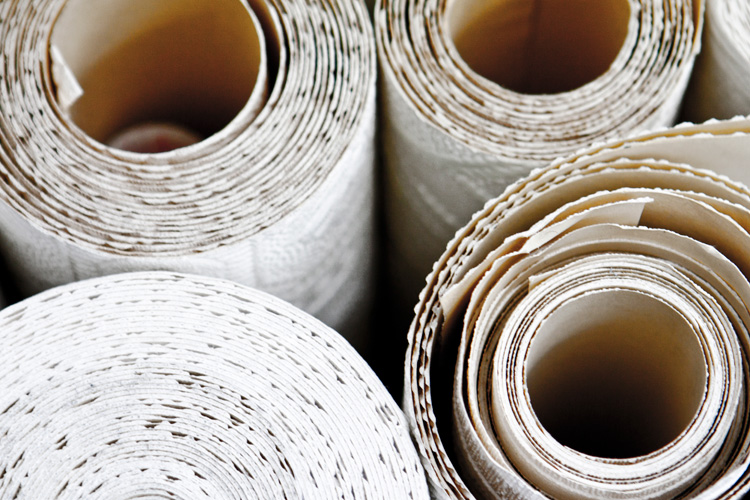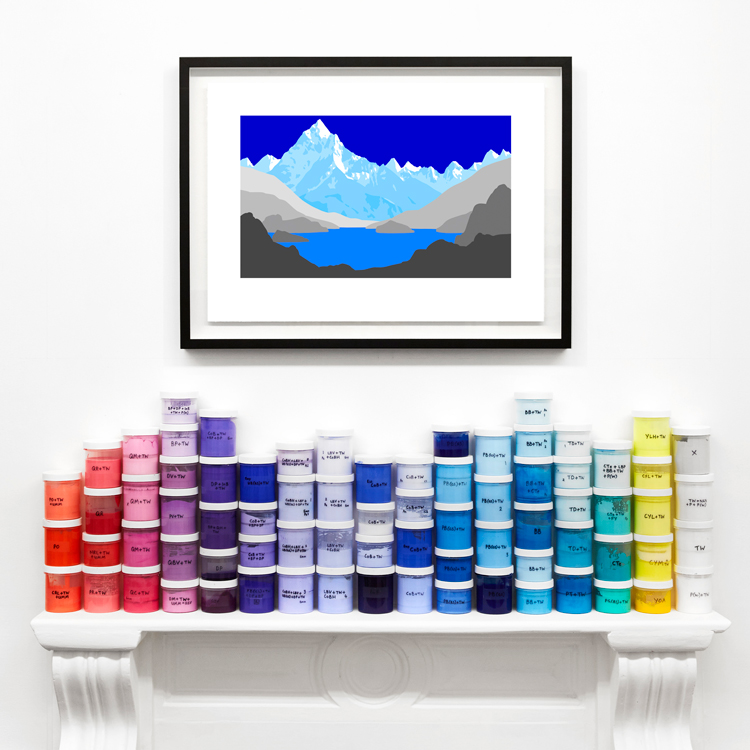Interview with TAG Fine Arts
tagfinearts.com
TAG Fine Arts: Did you ever decide to be an artist?
David Wightman My earliest memories are of myself painting and drawing. I never wanted to do anything else. However, growing up I didn’t know there was a profession called ‘artist’. I simply painted for myself. It wasn’t until I was in my teens that I became aware of art as a career path. I can’t imagine doing anything else.

Ariadne iv, acrylic and collaged wallpaper on canvas, 90 x 120 cm
TAG Fine Arts: What is your studio space like? Do you have any routines you follow when you’re creating?
DW: I have a studio in my home in East Dulwich. The walls are bright white and the room is lit with day-light bulbs so that I can see and mix colours perfectly. I have one wall covered with formulas for mixing my own paints. Everyone always remarks that my studio looks more like a scientist’s laboratory than an artist’s studio! I’m very disciplined with my practice – I draw, collage, and paint every single day. To get some headspace, I go for walks in Dulwich Wood every afternoon. This means I can return to my studio refreshed.

Rolls of wallpaper in David Wightman's studio
TAG Fine Arts: How would you describe your style and technique? How do your prints relate to your paintings?
DW: I paint imaginary landscapes using acrylic paint and collaged wallpaper on canvas. My style is partly influenced by colourful abstract artists (Josef Albers), a multitude of landscape painters, and an even greater variety of landscape traditions (e.g. French Impressionism to Japanese ukiyo-e). As a result, colour and composition are the most important aspects of my work. Inventing my own landscapes - as opposed to portraying real places - is far more satisfying to me too. This means I can be free to explore colour and form. I’m definitely more interested in creating something beautiful than depicting reality.
Each painting begins with a simple line drawing. The drawing is enlarged onto canvas using a grid before I begin collaging. I hand-cut hundreds of individual pieces of wallpaper to create the textured surfaces of my paintings. My collaging technique is similar to marquetry and is often mistaken as a lost Japanese craft - although I invented the technique myself. Once the collaging process is complete, I prime the entire painting white and begin mixing colour. I like to balance and contrast different hues and tones in my paintings. I’m often asked if I use laser cutters for my collaged surfaces and masked airbrush techniques for the colour and paint application. My entire collaging and painting process is done by hand. Each painting can take several weeks to complete. Patience is my only secret.
My prints are all based on the original drawing compositions I use for my paintings. Compositions can become paintings or prints and sometimes both. I see my prints as an accessible way into my work. They are explorations of colour and composition that complement my larger original paintings.
I see my landscape paintings and prints as beautiful distractions. They function as abstract compositions as well as imaginary vistas. My work offers a glimpse of another world - seemingly real yet entirely fictional.

Colour swatches in David Wightman's studio
TAG Fine Arts: If you could have dinner with any artist, past or present, who would it be and why?
DW: Katsushika Hokusai (1760-1849) – the Japanese artist best known for his print series Thirty-six Views of Mount Fuji. I would love to discuss our different approaches to colour and landscape while enjoying Japanese food.

Beatrix ii, digital archival print on Somerset satin 330gsm paper with a deckle edge, 44 x 62 cm, signed limited edition of 25
TAG Fine Arts: What are you working on at the moment?
DW: I’m working on lots of new collaged landscape paintings using an even wider palette. I’m also working on several new ideas for print editions to be launched with TAG soon. Watch this space!
TAG Fine Arts and David Wightman